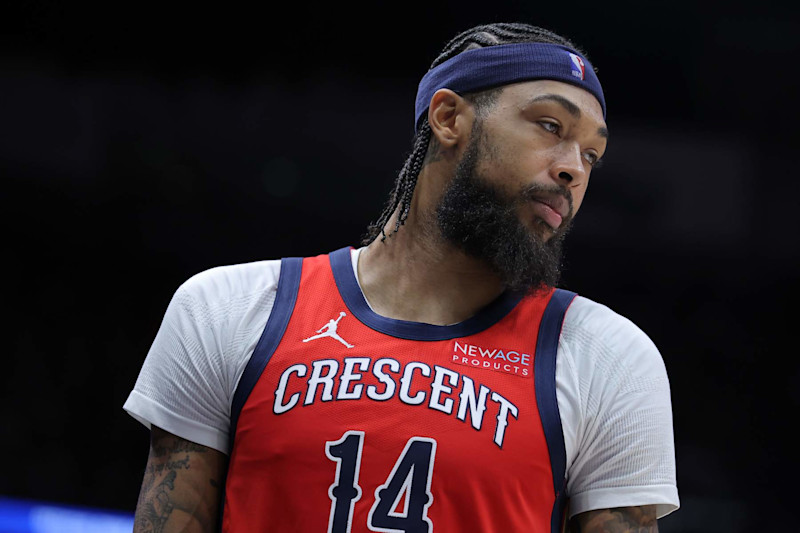
Jonathan Bachman/Getty Images
Managing finances has always been a must for NBA teams, but with the new rules of the 2023 collective bargaining agreement, it’s become even more critical.
As the 30 franchises look ahead to next offseason, the opportunity to reset their books may come ahead of the February 6 trade deadline. Each team will chart its course ahead, balancing winning now (if applicable) against opportunities in the draft, free agency and trade.
The following is a list of each team’s looming primary contract decision:
The Numbers
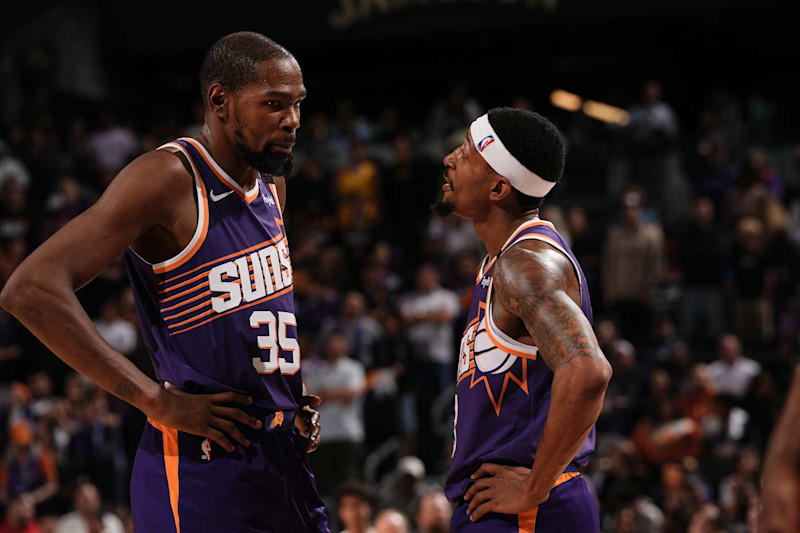
Kate Frese/NBAE via Getty Images
The higher a franchise spends, the fewer tools it has to improve its roster. Next year’s salary cap is projected to be $154.7 million, which means the least a team can spend is $139.2 million.
The upper thresholds include the luxury tax ($187.9 million), first apron ($195.9 million) and second apron ($207.8 million). With the tax system shifting for 2025-26, penalties are dropping (compared to previous years) for teams willing to spend about $11 million over the line. The penalties will be harsher than ever for those nearing the second apron and above, and the repeater tax penalty will double.
Will that curtail spending and impact the contract decisions to come? That’s yet to be determined, but in general, teams will increasingly avoid the second apron and repeater taxes. Then again, most teams have habitually avoided luxury taxes altogether.
Atlanta Hawks: Trae Young
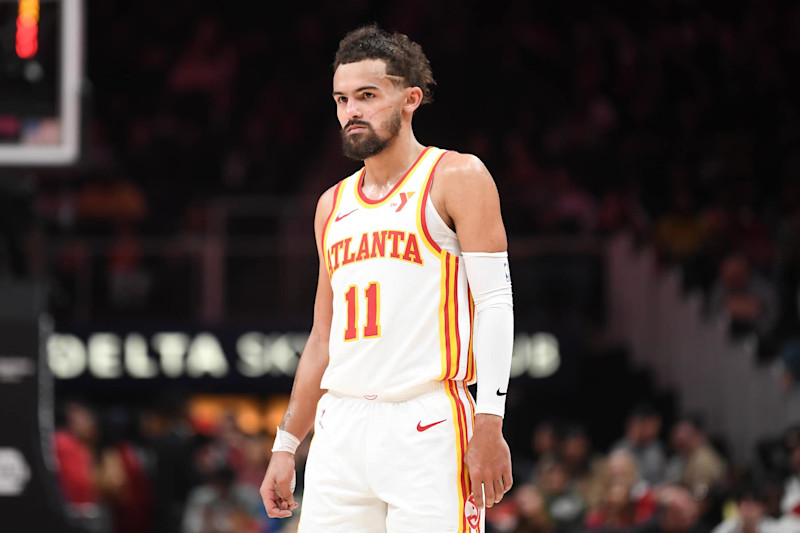
Paras Griffin/Getty Images
Star players expect to be taken care of by their franchises, and Trae Young is nearing extension eligibility. The Hawks haven’t advanced past the first round since he led the team in 2021. Is the franchise fully committed to its star point guard?
If not, that’s a budding issue for Young, who would probably expect recommitment. His path would probably include opting into his final year ($49 million for 2026-27) to add three more seasons starting at $52.9 million for a total new salary of $171.3 million.
Other free agents*: Garrison Mathews, Larry Nance Jr., David Roddy
*For this list, players on two-way contracts will be omitted.
Boston Celtics: Al Horford

Brian Fluharty/Getty Images
The Celtics are heavily invested in their championship roster, but how long can older veteran role players such as Al Horford and Jrue Holiday cost-effectively support stars Jayson Tatum and Jaylen Brown?
Boston will pay repeater taxes next year with a projected payroll of $232.9 million plus $282.5 million in tax before paying Horford (currently at $9.5 million). The team is currently for sale, so the 38-year-old’s fate may be tied to the new leadership’s willingness to pay even heavier taxes.
Other free agents: Luke Kornet, Jaden Springer (RFA*)
*RFA = potential restricted free agent
Brooklyn Nets: Cam Thomas
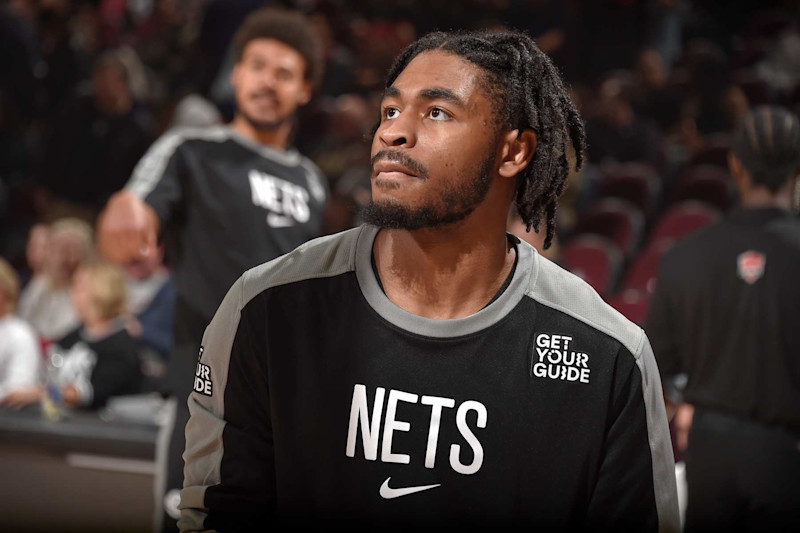
David Liam Kyle/NBAE via Getty Images
The Nets project will have more cap room than any team in the NBA this July (up to $80 million or higher, but more likely in the $55 million-plus range).
Thomas can be made restricted with his cap hold as a free agent taking up $12.1 million of the team’s space. If it chooses, Brooklyn would use its spending power first, then give Thomas a new deal.
At 24.5 points per game, he will want at least in the $30 million starting range, but with no one else adequately positioned to give him an offer sheet (the only other viable candidate would be the Washington Wizards), what leverage will he have?
Other free agents: Bojan Bogdanović, Dorian Finney-Smith (PO*), Keon Johnson (TO**), Dennis Schröder, Day’Ron Sharpe (RFA), Ben Simmons, Trendon Watford, Ziaire Williams (RFA), Jalen Wilson (TO)
*PO = player option
**TO = team option
Charlotte Hornets: Tre Mann
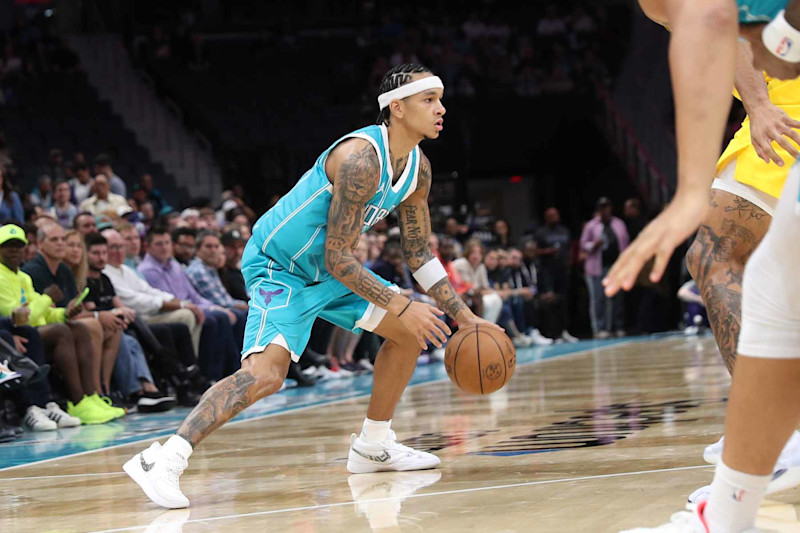
Brock Williams-Smith/NBAE via Getty Images
Mann has played an essential role on the Hornets, providing scoring (14.8 points) and playmaking (3.3 assists) in 25.1 minutes per game. He’s shooting the ball well (38.8 percent from three) but needs to reduce his turnovers (1.9).
The Hornets can get out of Cody Martin’s $8.7 million salary and other players’ to reach about $21 million in cap space (their first-round pick determining the final number), including letting Mann go. As a restricted free agent, his cap hold is $14.7 million.
Charlotte isn’t near the tax, but he may struggle to find a higher salary than the non-taxpayer mid-level exception (NTMLE, projected to be $14.1 million). The Hornets might be willing to start his new deal around that cap-hold figure.
Other free agents: Seth Curry, Taj Gibson, Vasilije Micić (TO, RFA)
Chicago Bulls: Josh Giddey
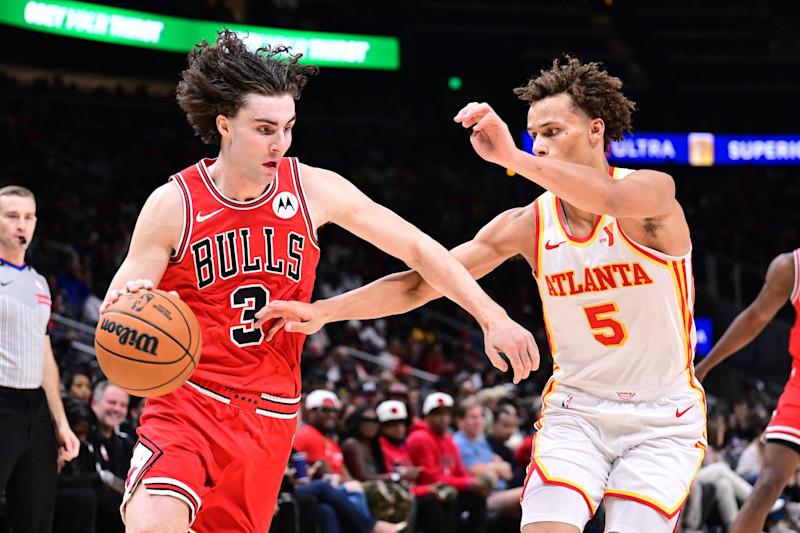
Adam Hagy/NBAE via Getty Images
Giddey needed a change of scenery. The trade from the Oklahoma City Thunder to the Bulls allows him to play more of his game. He’s improved most as a shooter, hitting a career-high 43.2 percent from three-point range. He’s also at a personal best of 7.0 assists per game.
The 22-year-old’s challenge will be working with the Chicago front office, which has a reputation for being spendthrift.
If Giddey is looking for a contract in the $30 million range, he’ll need an offer sheet from the Brooklyn Nets or Washington Wizards. Without it, Chicago has the leverage and may be more likely to offer a contract starting around $20 million per season.
Other free agents: Lonzo Ball, Jevon Carter (PO), Torrey Craig, Chris Duarte (RFA), Talen Horton-Tucker
Cleveland Cavaliers: Caris LeVert
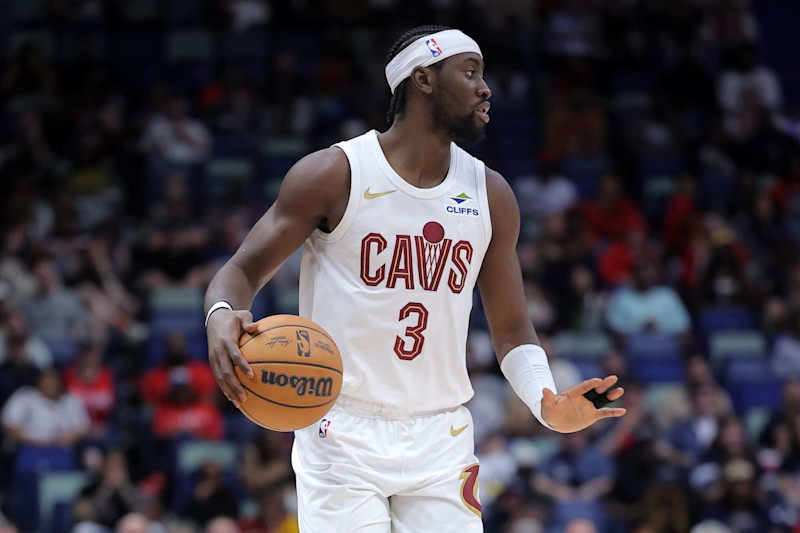
Jonathan Bachman/Getty Images
Cleveland is the best team in the NBA (through the first few weeks), and its core is under contract for multiple seasons. LeVert is the exception in the final year of his deal.
While the Cavaliers could look to retain him at a price near the NTMLE ($14.1 million), the team projects to be above the first apron without him at nearly $202 million in payroll.
LeVert would push the team over the second apron unless Cleveland can find a taker for Georges Niang (whose deal expires after 2024-25 at $8.2 million).
Other free agents: Ty Jerome, Sam Merrill, Tristan Thompson
Dallas Mavericks: Luka Dončić
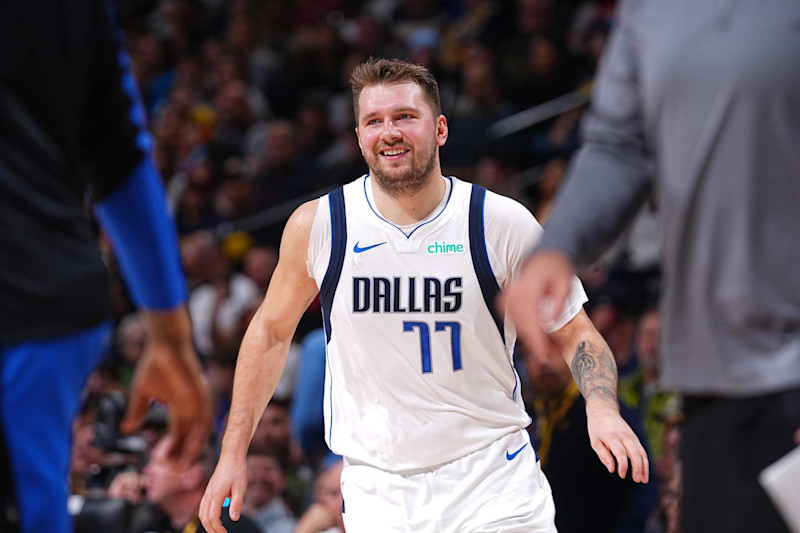
Bart Young/NBAE via Getty Images
This would be the easiest decision on the list.
The Mavericks will understandably give Dončić whatever he wants, and the All-Star can opt out of his $49 million salary in 2026-27 to start a supermax extension starting at around $59.5 million for five additional years at $345.3 million.
Kyrie Irving’s status may be more delicate since he can opt out of his final year at $44 million, but he’s likely to re-sign with Dallas as well.
Other free agents: Spencer Dinwiddie, Dante Exum, Quentin Grimes (RFA), Irving (PO), Markieff Morris
Denver Nuggets: Christian Braun
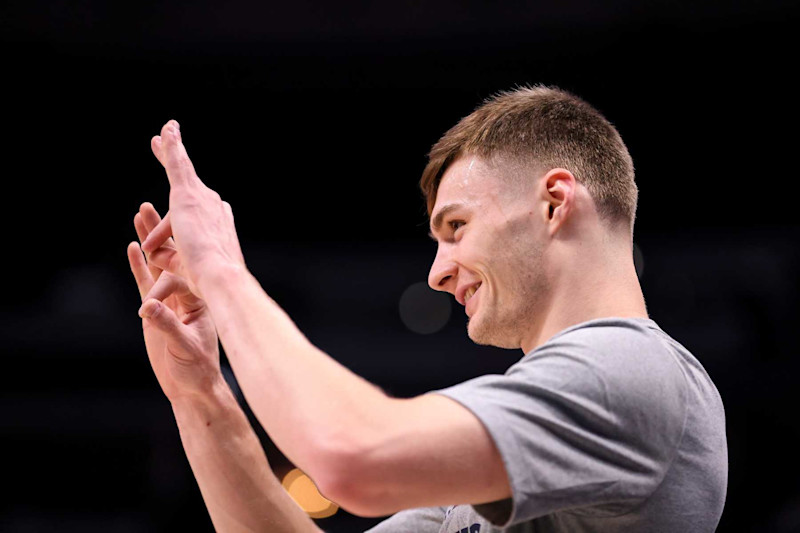
Tyler Schank/Clarkson Creative/Getty Images
The Nuggets invested heavily to win the championship in 2022-23, but the team has struggled to keep its core together.
First, Bruce Brown and Jeff Green left in 2023, and then Kentavious Caldwell-Pope this past summer. Braun’s extension wouldn’t start until 2026-27, but Denver will still be paying a mint to Nikola Jokić, Jamal Murray, Aaron Gordon and Michael Porter Jr.
Denver may pause on an extension until he becomes a restricted free agent in 2026 but may try to reach a compromise at a figure near the NTMLE (projected to be $15.5 million in two years).
Other free agents: Vlatko Čančar, DeAndre Jordan, Dario Šarić (PO), Russell Westbrook (PO)
Detroit Pistons: Jaden Ivey
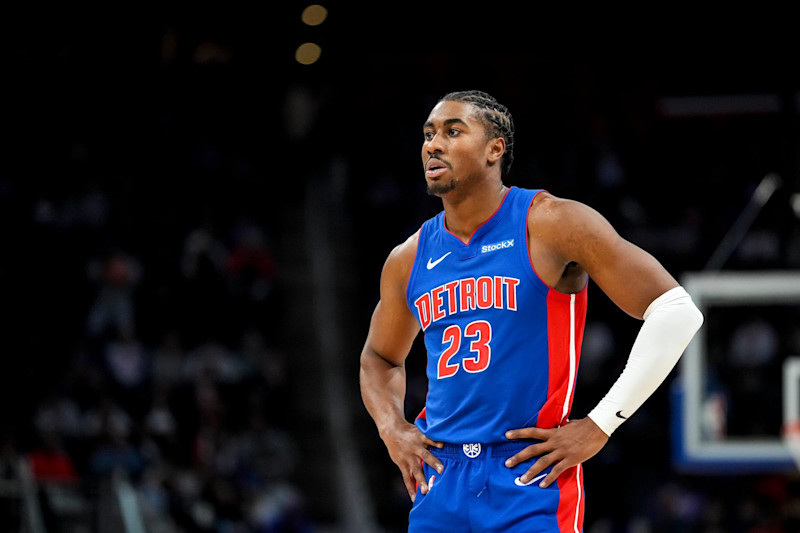
Nic Antaya/Getty Images
The Pistons have two significant decisions with Jalen Duren and Ivey, who are rookie-scale extension-eligible. Detroit can wait until restricted free agency in 2026, but teams and players generally prefer to lock in deals if they can.
Ivey may be the more challenging negotiation, as he and Cade Cunningham are best served with the ball in their hands. Do they work together long-term?
As the team’s primary big man, Duren seems an easier decision. Detroit could follow the path of the Houston Rockets with Jalen Green and Alperen Şengün, committing significant salaries before the team adequately established itself as a playoff team.
Other free agents: Malik Beasley, Duren (RFA), Tim Hardaway Jr., Wendell Moore Jr.
Golden State Warriors: Jonathan Kuminga
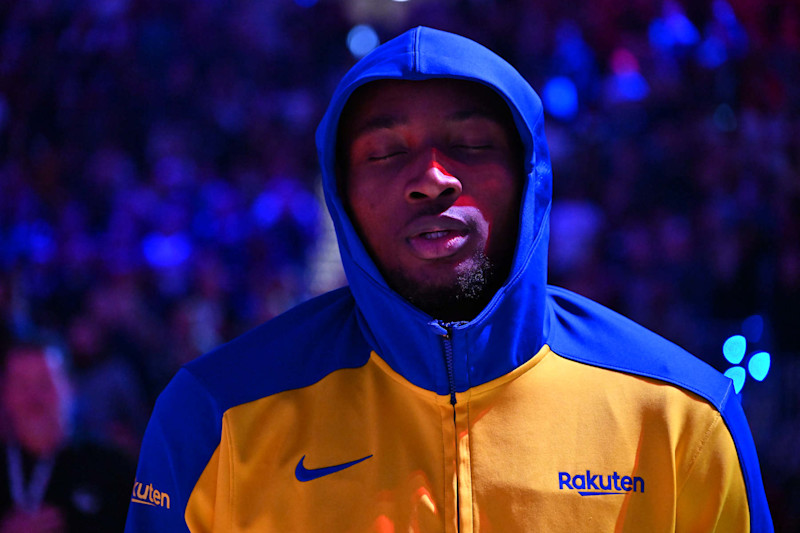
Jason Miller/Getty Images
The Warriors weren’t able to reach a compromise with Kuminga this offseason, pushing the decision to the summer, when the forward will be a restricted free agent.
If Golden State doesn’t want to keep him, he could be moved ahead of the deadline. Otherwise, he’ll need some help to get the price he’s seeking (believed to be in the $30 million-per-season range).
Unless the Nets or Wizards make a run with an offer sheet, Kuminga can accept the single-year qualifying offer from the Warriors ($8-10 million range) to become an unrestricted free agent in 2026. That’s the worst-case scenario. It’s more likely the sides will come to terms at a livable number.
Another option is a sign-and-trade, though those can be complicated to execute.
Other free agents: Kevon Looney, De’Anthony Melton, Gary Payton II, Gui Santos (TO, RFA), Lindy Waters III
Houston Rockets: Fred VanVleet
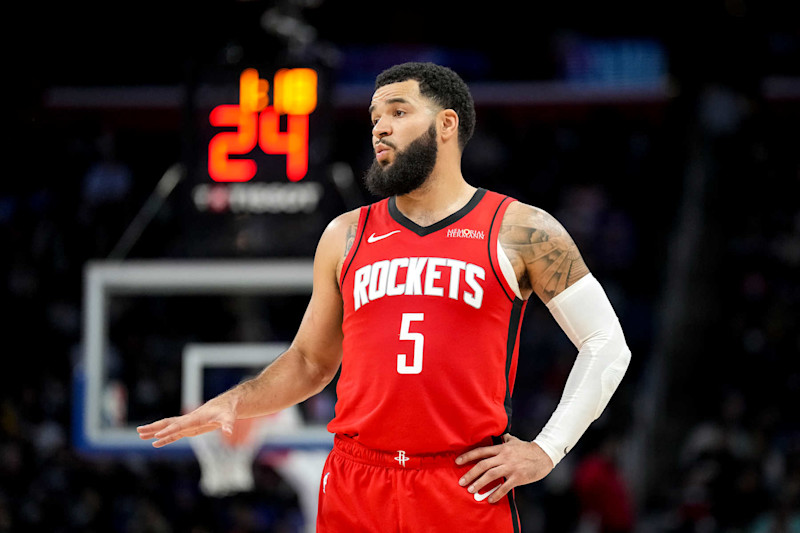
Nic Antaya/Getty Images
The Rockets need to decide on a potential rookie-scale extension for Jabari Smith Jr., but the more significant question may be Fred VanVleet.
The veteran guard has a $44.9 million team option, which seems higher than the market value (by a significant margin).
Look for Houston to opt out and re-sign VanVleet to a multi-year deal at a much lower annual number. Perhaps a four-year deal starting in the low $20 million range for 2025-26.
Other free agents: Steven Adams, Jeff Green, Aaron Holiday (TO), Jae’Sean Tate
Indiana Pacers: Myles Turner
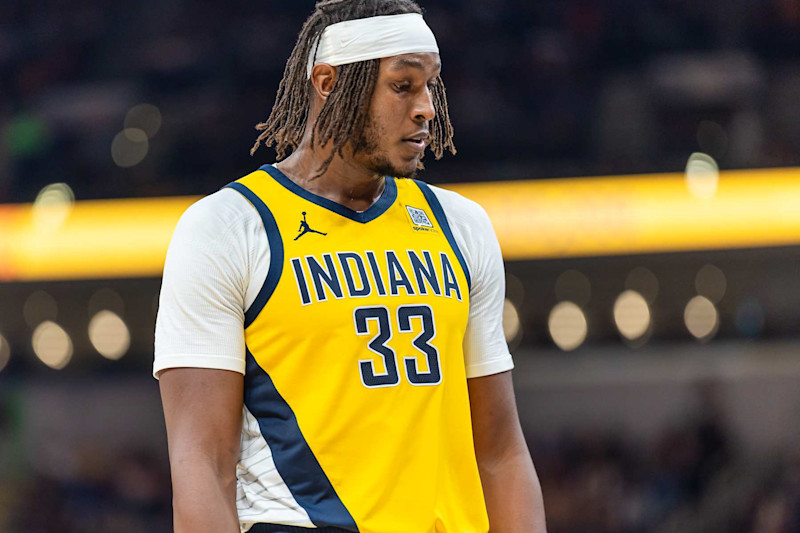
Michael Hickey/Getty Images
After a tremendous 2023-24, the Pacers invested in their roster. Turner is the primary free agent, but can the team afford him if the franchise stays firm on its no-luxury-tax stance?
Filling out the roster with minimum players, the team projects to have about $176 million in payroll before re-signing Turner. If he gets a starting salary in the $20 million range, that would put Indiana at about $194 million (almost $6 million over the tax).
The answer would be to pay Turner less or shed salary elsewhere in trade (or just pay tax). Also looming, the team faces a rookie-scale extension decision on Bennedict Mathurin.
Other free agents: Isaiah Jackson (RFA), James Johnson, James Wiseman (TO)
LA Clippers: James Harden
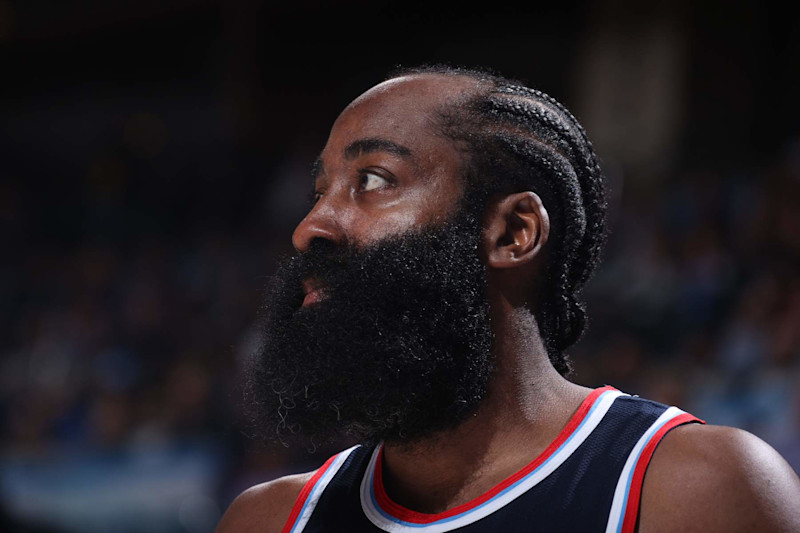
Nathaniel S. Butler/NBAE via Getty Images
Most of the Clippers’ roster is under contract for next season. Outside of a few role players, the biggest choice will be a mutual decision between the club and Harden.
The 10-time All-Star has a $36.3 million player option. He can opt out and get a longer deal with the Clippers or, if the team isn’t willing, just opt in to finish out his contract. He may need to do the latter, as L.A. decides its long-term future after letting Paul George go in free agency this past summer.
Other free agents: Mo Bamba, Nicolas Batum (PO), Amir Coffey, Bones Hyland (RFA), Kevin Porter Jr. (PO), PJ Tucker
Los Angeles Lakers: LeBron James
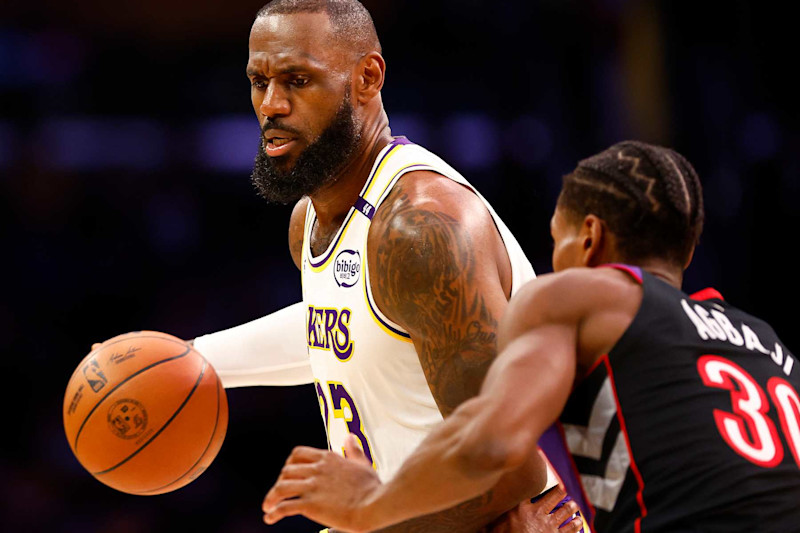
Ronald Martinez/Getty Images
It appears James is at the stage of his career where he’ll take two-year contracts with a player option—functionally one-year deals with the Lakers.
Los Angeles seems fully invested in the James experience for as long as he chooses to play.
With D’Angelo Russell coming off their books (assuming he’s not traded at the deadline), the Lakers should have a little more wiggle room next year under the aprons.
Other free agents: Jaxson Hayes, Jalen Hood-Schifino, Cam Reddish, Russell, Christian Wood
Memphis Grizzlies: Jaren Jackson Jr.
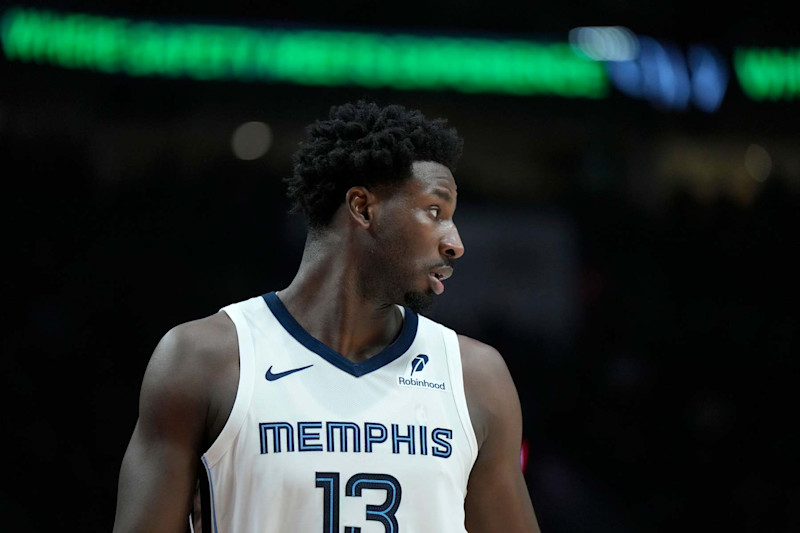
Soobum Im/Getty Images
The Grizzlies can extend Jackson this summer to the maximum 140 percent raise over his expiring $23.4 million for 2025-26.
If he wants more than the four years, $146.8 million maximum Memphis can pay, he’ll have to wait for unrestricted free agency in 2026.
Other free agents: Santiago Aldama (RFA), Jake LaRavia, Luke Kennard
Miami Heat: Jimmy Butler
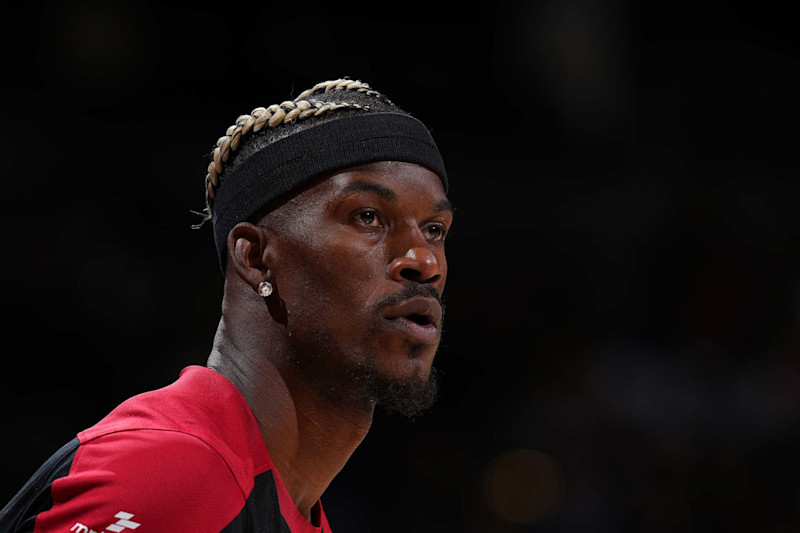
Bart Young/NBAE via Getty Images
Butler isn’t likely to find any team capable (or willing) next summer to pay him close to his $52.4 million player option. If he wants an extension this year (he’s currently eligible), it will be with Miami or another team via trade.
He hasn’t had the strongest start to the season so that option may be the most likely path—but Miami may not want his number on the books next season.
Keep an eye on Butler leading into the February 6 trade deadline.
Other free agents: Thomas Bryant, Alec Burks, Duncan Robinson (ETO*), Josh Richardson
*ETO = Early termination option
Milwaukee Bucks: Bobby Portis
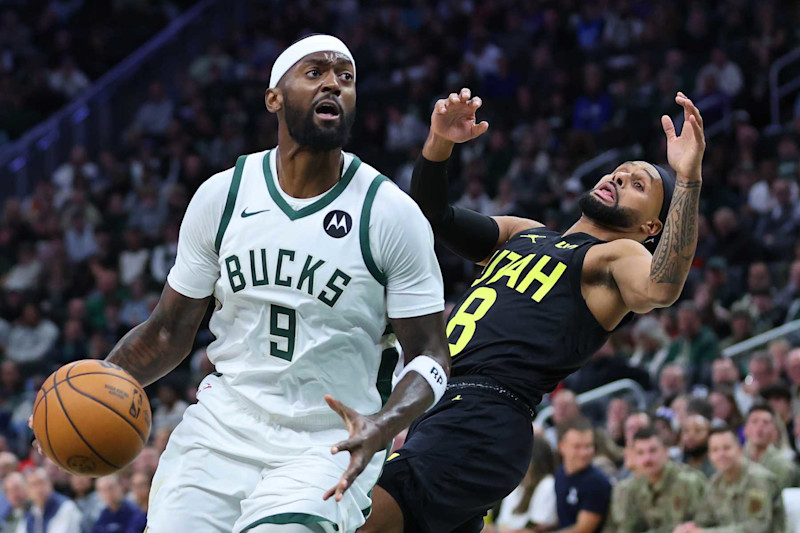
Stacy Revere/Getty Images
The Bucks have started the season poorly. The team hasn’t replenished its talent well since the title in 2021, and the Damian Lillard trade hasn’t been the boon the team had hoped.
Assuming Giannis Antetokounmpo doesn’t try to push his way out of Milwaukee, the franchise needs to decide on a few key free agents.
It may be time to let center Brook Lopez go, but the bigger debate may be about Bobby Portis, who has a $13.4 million player option. While he’d like to get paid in the $20 million range, he may find teams don’t have that spending power. Milwaukee’s competition is unlikely to exceed the $14.1 million NTMLE.
Other free agents: MarJon Beauchamp, Pat Connaughton (PO), Brook Lopez, Khris Middleton (PO), Taurean Prince, Gary Trent Jr., Delon Wright
Minnesota Timberwolves: Julius Randle
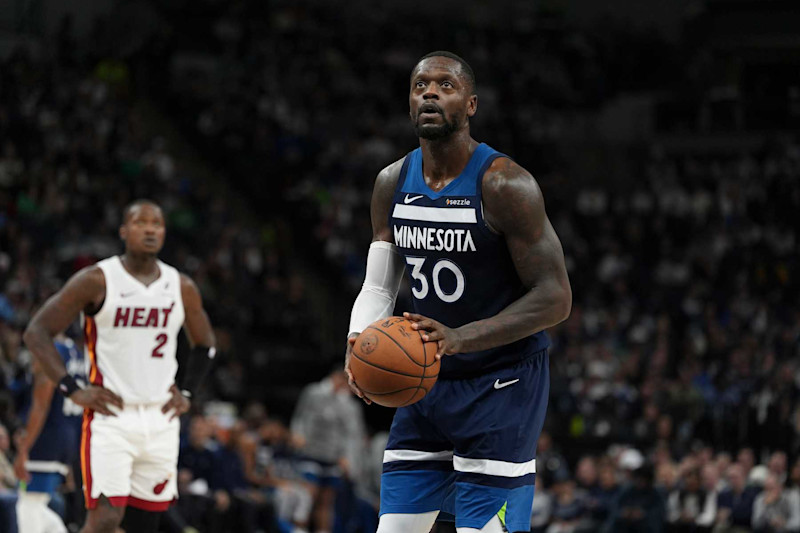
Jordan Johnson/NBAE via Getty Images
The Timberwolves will undoubtedly pay Naz Reid more than his player option of $15 million, but Randle is harder to peg.
The franchise has the year to decide how well he fits into the core, but with so few teams with cap room, he may be more likely to opt into his $30.9 million for 2025-26.
An alternative option might be a longer deal at a lower price, like Rudy Gobert recently took with Minnesota, but Randle may not be as inclined to take less per year.
Other free agents: Nickeil Alexander-Walker, PJ Dozier, Luka Garza (TO), Joe Ingles, Josh Minott (TO, RFA), Reid (PO)
New Orleans Pelicans: Brandon Ingram

Jonathan Bachman/Getty Images
The Pelicans are another franchise that has stayed consistently luxury-tax averse.
Last year, the team started the season above the tax but got out of Kira Lewis Jr. to get under. This season, look for a similar move, which could include getting out of Ingram.
Injuries have made the season an early disaster. Perhaps New Orleans can stabilize, but it needs to decide on Ingram’s long-term fate. If he’s a free agent this summer with the Pelicans, where else can he get paid if the Nets and Wizards aren’t offering him significant money? He could end up back in New Orleans without better options at a figure that keeps the team under the tax (perhaps $20 million).
Other free agents: Javonte Green, Jaylen Nowell, Jeremiah Robinson-Earl, Daniel Theis
New York Knicks: Precious Achiuwa
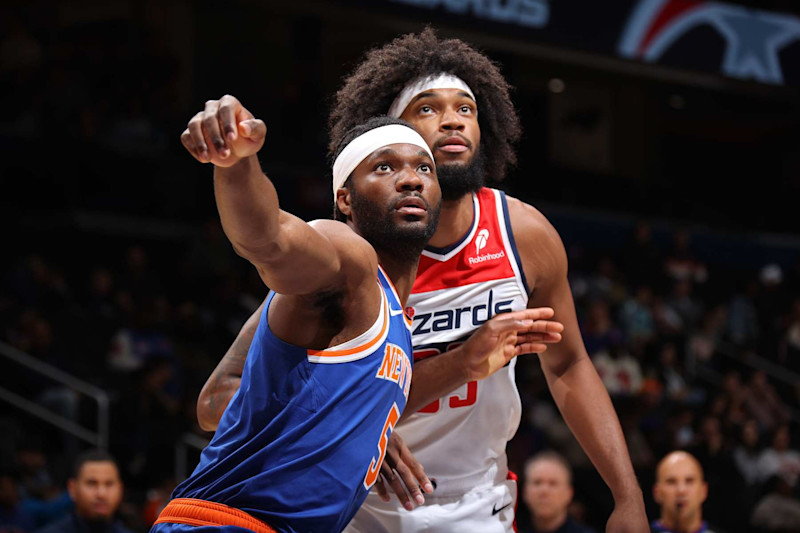
Stephen Gosling/NBAE via Getty Images
The Knicks handled most of their business this past summer, bringing in Karl-Anthony Towns and Mikal Bridges while retaining Jalen Brunson (extension) and OG Anunoby.
The team wasn’t sure about Achiuwa, so it gave him a one-year $6 million contract to return. He’s New York’s most notable question, but it may move on if it doesn’t want to exceed the second apron (within about $2 million before deciding on Achiuwa).
Other free agents: Ariel Hukporti (TO, RFA), Cam Payne, Matt Ryan, Jericho Sims
Oklahoma City Thunder: Chet Holmgren
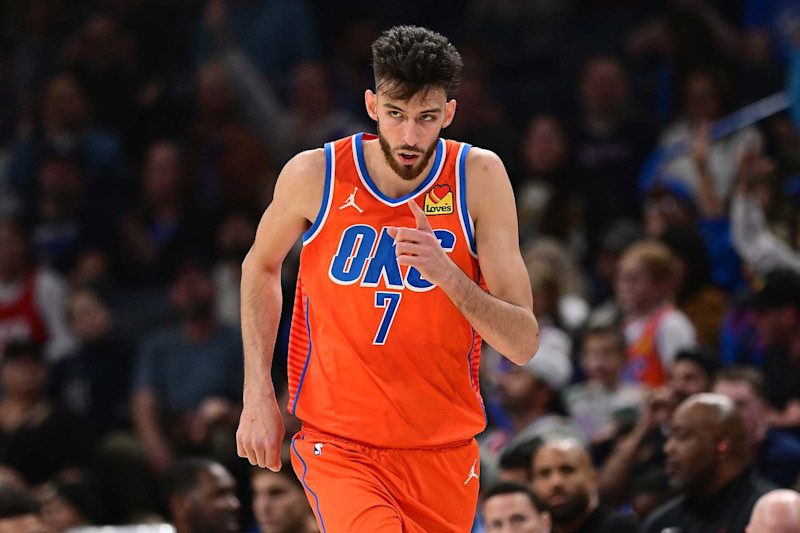
Joshua Gateley/Getty Images
Take your pick on priorities, as the Thunder can extend Chet Holmgren and Jalen Williams before the start of next season.
Both will be looking for massive contracts, but Holmgren may be the more difficult one for Oklahoma City, given his injury history. He missed his initial rookie campaign (foot) and is currently sidelined (hip) until 2025.
The Thunder may also be able to max out Shai Gilgeous-Alexander on a supermax, adding four additional years. The more successful the franchise has become, the more expensive it will be to keep the group together.
The good news is that the bill won’t come due until the 2026-27 season.
Other free agents: Alex Caruso, Malevy Leons (RFA), Jaylin Williams (TO, RFA)
Orlando Magic: Paolo Banchero
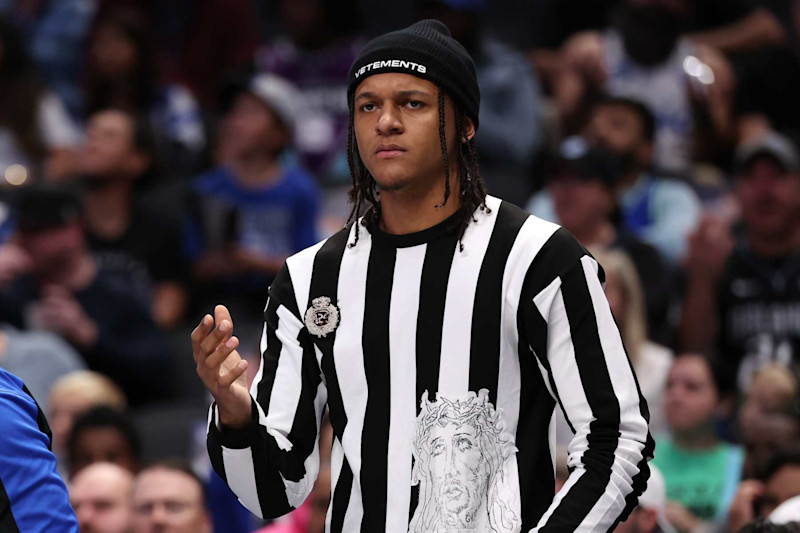
Sam Hodde/Getty Images
The Magic will undoubtedly max out Banchero this offseason on a rookie-scale extension, probably with criteria allowing him to jump to the 30 percent max ($296 million over five years) should he earn All-NBA honors (first, second or third team), Defensive Player of the Year or MVP.
Other free agents: Gary Harris (TO), Caleb Houstan (TO, RFA), Cory Joseph (TO), Mo Wagner (TO)
Philadelphia 76ers: Kelly Oubre Jr.
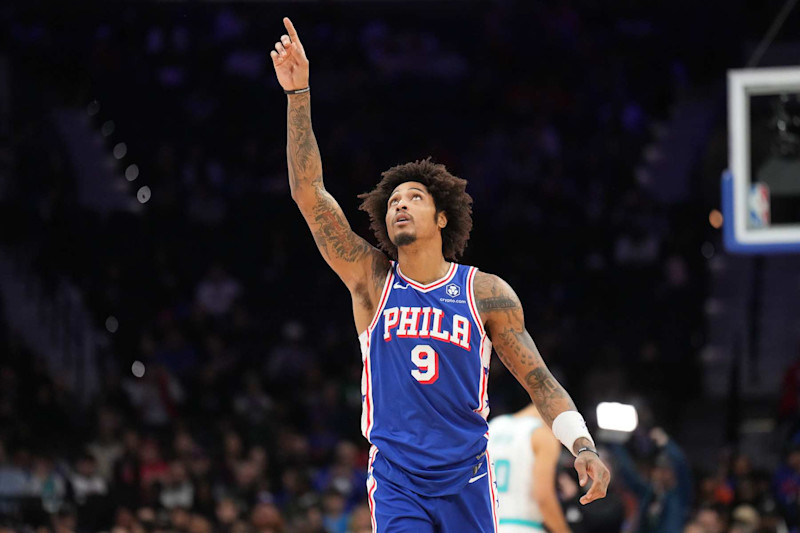
Jesse D. Garrabrant/NBAE via Getty Images
The Sixers spent heavily this offseason, notably adding Paul George and retaining Tyrese Maxey. But Oubre, in his second year with the franchise, re-signed on a two-year deal with a player option ($8.4 million) for 2025-26. He’ll probably explore free agency, even if it’s to re-sign with the franchise.
Philadelphia will have enough room under the second apron to pay him closer to the NTMLE, but with the team’s slow start, will they reinvest in Oubre?
Other free agents: Andre Drummond (PO), Eric Gordon (PO), Reggie Jackson, Kyle Lowry, Guerschon Yabusele
Phoenix Suns: Kevin Durant
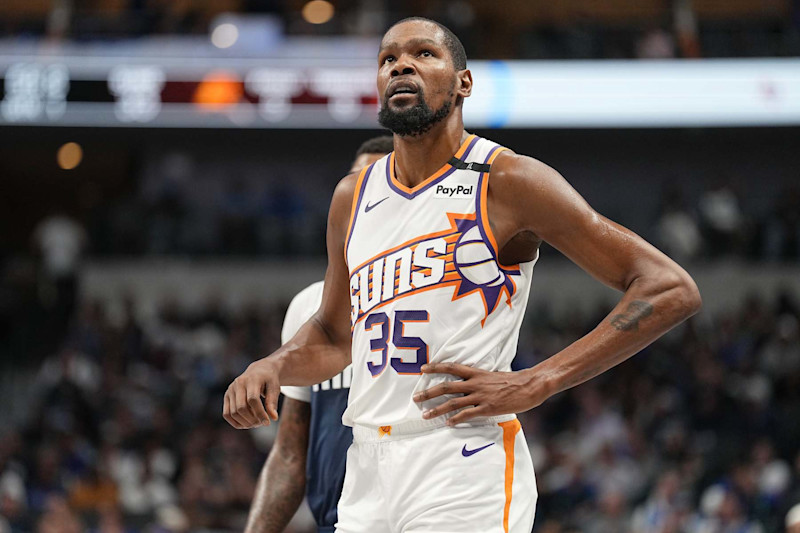
Glenn James/NBAE via Getty Images
Durant was eligible to extend before the season, but he and the Suns chose to wait on adding one additional year (limited by the over-38 rule).
Many NBA sources assume Durant and the team will wait until the summer when he can add two seasons at $123.8 million ($59.5 million starting salary).
Other free agents: Bol Bol, Tyus Jones, Damion Lee, Monte Morris, Mason Plumlee
Portland Trail Blazers: Shaedon Sharpe
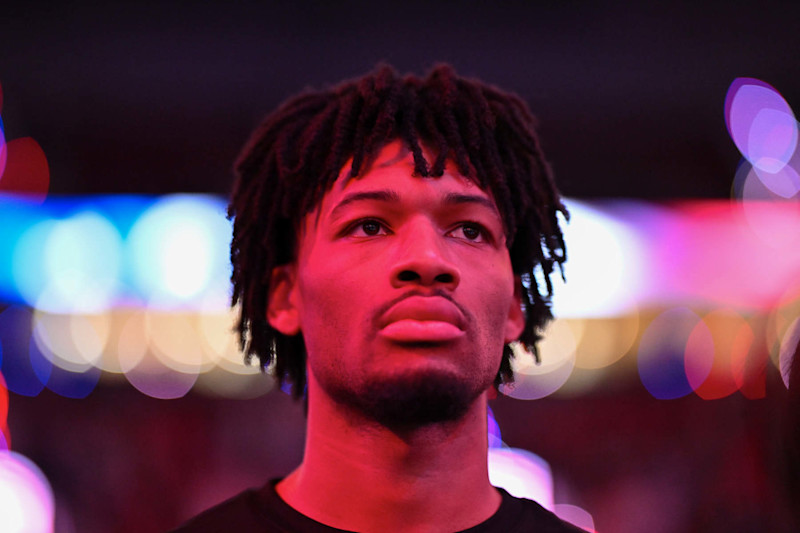
Alika Jenner/Getty Images
The Blazers are slowly turning the corner into a young, competitive team.
The hope is Sharpe will be the face of the team’s next wave alongside rookie center Donovan Clingan.
Sharpe can sign a rookie-scale extension next summer, and if he has a tremendous year, he could seek a deal in the Jalen Green range (above $30 million a season with the Houston Rockets).
Portland also needs to decide if Anfernee Simons is a higher priority than Scoot Henderson, as Simons’ contract expires after 2025-26 and can be extended in July.
Other free agents: Dalano Banton, Rayan Rupert (TO, RFA), Matisse Thybulle (PO), Jabari Walker (RFA)
Sacramento Kings: De’Aaron Fox

Photos by Michael Gonzales/NBAE via Getty Images
Fox is playing to earn an All-NBA berth to raise his extension eligibility to the 35 percent max ($59.5 million, five additional seasons at $345.3 million). If not, he’ll be limited to $51.6 million over four ($228.6 million). Either would be a massive windfall that the Kings will presumably be eager to pay.
Keegan Murray will also be rookie-scale extension-eligible this summer.
Other free agents: Doug McDermott, Keon Ellis (TO, RFA), Alex Len, Trey Lyles, Jordan McLaughlin, Orlando Robinson (RFA)
San Antonio Spurs: Jeremy Sochan
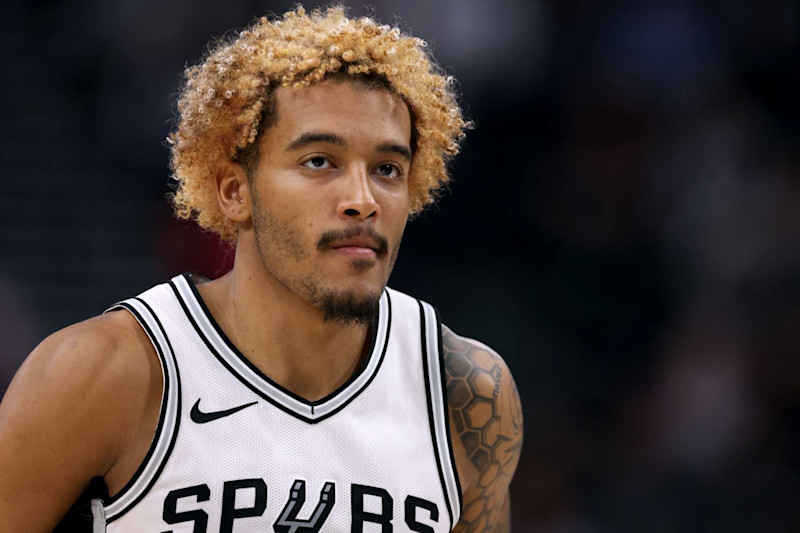
Harry How
San Antonio has issued rookie-scale extensions to Keldon Johnson and Devin Vassell in recent years. Next on the list is Jeremy Sochan.
The No. 9 pick in 2022 is a bit odd as a player. He doesn’t space the floor (career 28.4 percent from three), but he plays hard, defends, rebounds and is a decent playmaker. The Spurs will probably reach a number above the NTMLE to keep Sochan long-term.
Malaki Branham and Blake Wesley are also eligible for rookie-scale extensions.
Other free agents: Charles Bassey, Tre Jones, Sandro Mamukelashvili, Chris Paul
Toronto Raptors: Ochai Agbaji

Sean M. Haffey/Getty Images
Agbaji is already on his third NBA team, though he never played for the team that drafted him (Cleveland Cavaliers) in 2022—as part of the Donovan Mitchell trade with the Utah Jazz. Eventually, Utah sent him to the Raptors with Kelly Olynyk, where he’s grown into a productive starter.
Look for Toronto to give him a rookie-scale extension this offseason, at or above the NTMLE number. Davion Mitchell, who will be restricted this offseason, seems likely to return as well.
Other free agents: Chris Boucher, Bruce Brown Jr., Bruno Fernando, Mitchell, Garrett Temple
Utah Jazz: Walker Kessler
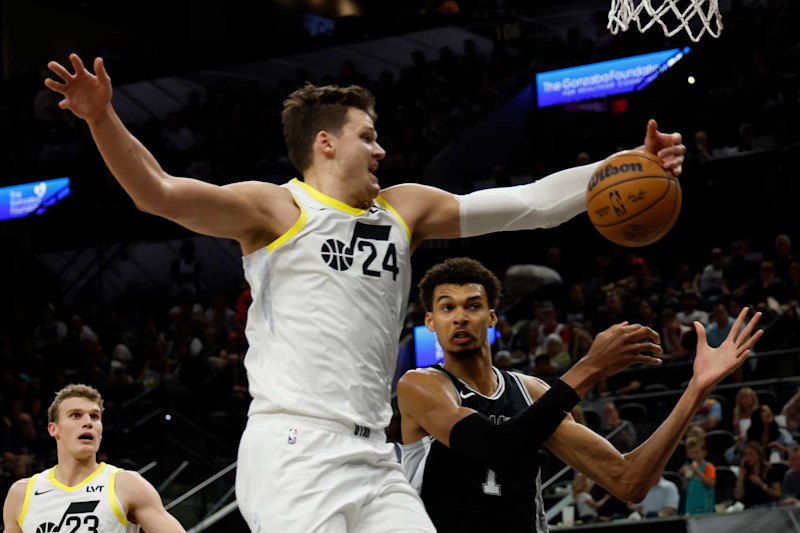
Ronald Cortes/Getty Images
Kessler’s name has been floated around the trade rumor mill for several months, perhaps because he’s coming due on a rookie-scale extension this summer. The Jazz don’t have to decide and can let this drag out to restricted free agency in 2026.
But if the team isn’t sold that he’s where it wants to invest, then getting an early return for him in trade may make sense.
Kessler would presumably want a deal in the $20-$30 million annual range—who wouldn’t? His market isn’t quite clear yet, but it may be a topic the Jazz choose to avoid entirely before the trade deadline.
Other free agents: John Collins (PO), Patty Mills
Washington Wizards: Malcolm Brogdon
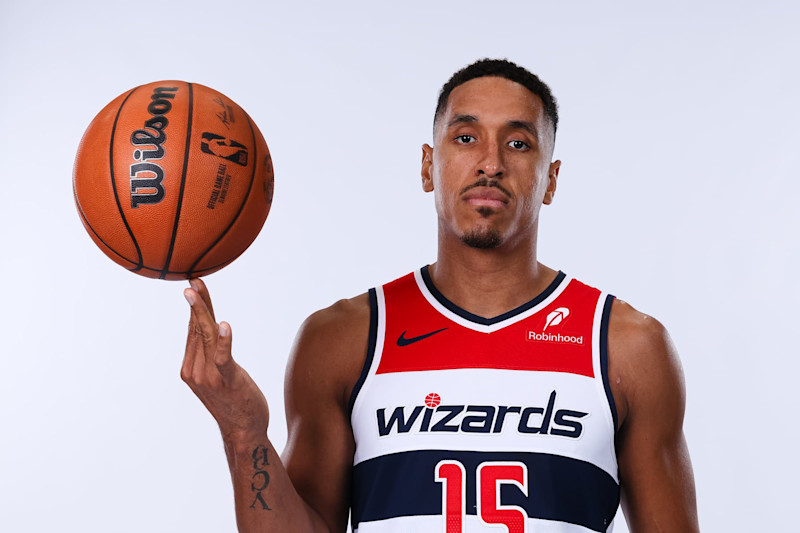
Scott Taetsch/Getty Images
The better answer here is “no one.” The Wizards don’t have any rookie-scale extension-eligible players. The franchise is rebuilding and seems unlikely to keep any pending free agents.
Perhaps Brogdon is on the list as a veteran presence on a reasonable contract near the NTMLE. Or he could go out in a sign-and-trade or even in a deal before February’s deadline.
Leave a Reply